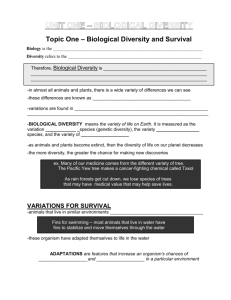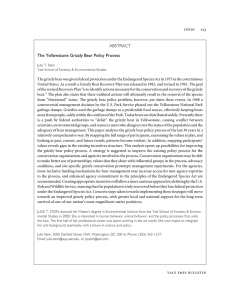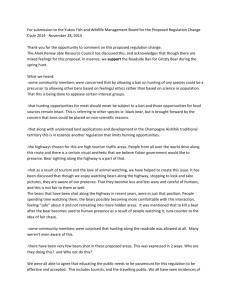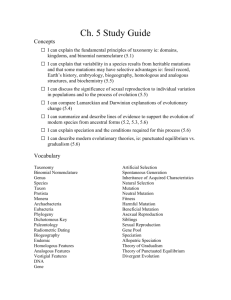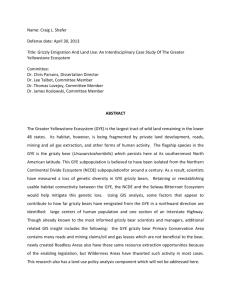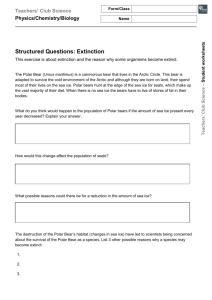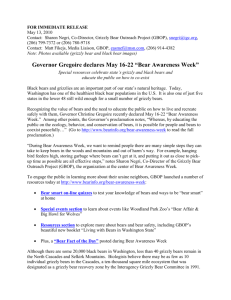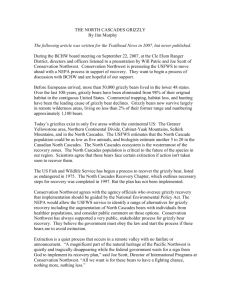Adaptation and Speciation Lesson Plan
advertisement
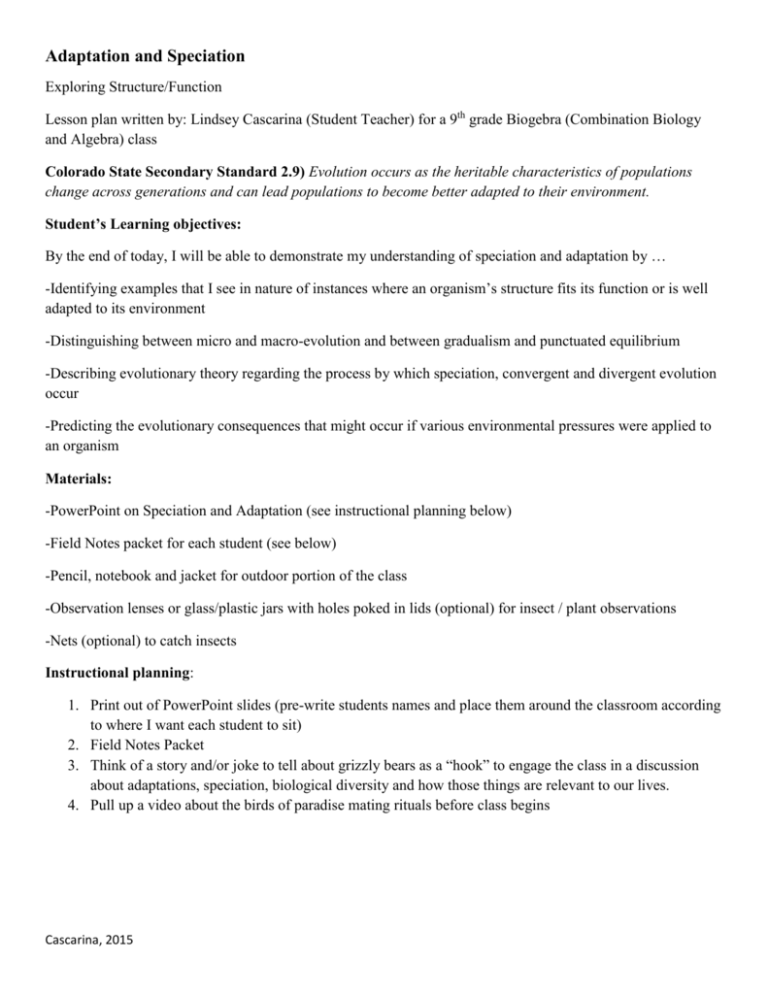
Adaptation and Speciation Exploring Structure/Function Lesson plan written by: Lindsey Cascarina (Student Teacher) for a 9th grade Biogebra (Combination Biology and Algebra) class Colorado State Secondary Standard 2.9) Evolution occurs as the heritable characteristics of populations change across generations and can lead populations to become better adapted to their environment. Student’s Learning objectives: By the end of today, I will be able to demonstrate my understanding of speciation and adaptation by … -Identifying examples that I see in nature of instances where an organism’s structure fits its function or is well adapted to its environment -Distinguishing between micro and macro-evolution and between gradualism and punctuated equilibrium -Describing evolutionary theory regarding the process by which speciation, convergent and divergent evolution occur -Predicting the evolutionary consequences that might occur if various environmental pressures were applied to an organism Materials: -PowerPoint on Speciation and Adaptation (see instructional planning below) -Field Notes packet for each student (see below) -Pencil, notebook and jacket for outdoor portion of the class -Observation lenses or glass/plastic jars with holes poked in lids (optional) for insect / plant observations -Nets (optional) to catch insects Instructional planning: 1. Print out of PowerPoint slides (pre-write students names and place them around the classroom according to where I want each student to sit) 2. Field Notes Packet 3. Think of a story and/or joke to tell about grizzly bears as a “hook” to engage the class in a discussion about adaptations, speciation, biological diversity and how those things are relevant to our lives. 4. Pull up a video about the birds of paradise mating rituals before class begins Cascarina, 2015 Procedure/activity: Student Activity Engage Listen to a story about Grizzly Bears. Teacher Activity Tell a story (5 minutes) - “So, as many of you know- I am a police officer. I started out as a Park Ranger for Glacier National Park, in Montana. Part of my job was to caution visitors to be on the lookout for Grizzly Bears and take precautions to avoid bear encounters. Tourists can be pretty dumb, you know… walking right up to animals with your iPhone to take selfies next to a Grizz is not a great idea. So- I would walk around and advise hikers to wear little bells on their belts so they wouldn’t surprise any bears when they came around a corner (bears don’t appreciate little sneaky humans). I would also tell them to carry cans of pepper spray in case a bear approached. These cans are big, red plastic containers full of a chemical that smells like spicy peppers. After I sent hikers on their merry way down the trail, I would tell them to keep an eye out for piles of fresh bear poop…so they would know if there had been any recent bear activity in the area. I asked them if they knew how to tell the difference between black bear poop and grizzly bear poop…Do you guys know?? Black bear poop comes in smaller plops and is full of berries, woody bits and tufts of fur. GRIZZLY bear poop…on the other hand, comes in big fat mounds and often contains little silver bells and chunks of red plastic and smells like spicy peppers.” Explore Watch/ Listen to a PowerPoint presentation on Speciation and Adaptation Brainstorm and discuss: What are the grizzlies in Yellowstone digging around for? What would the world be like if most living things on this planet were Grizzly Bears? Talk about Grizzlies in Yellowstone (2-5 minutes) - up on rocky cliffs digging around for….anyone know? MOTHS! Of all things a grizzly could eat….they are eating little frail insects. Why? Resources are depleted down low, moths are high in protein, and grizzlies have long claws they use to dig through the heavy rocks. Pose the questions: Why is biological diversity important? What would the world look like if every mammal on earth were a grizzly bear? (3 minutes to talk, 2 minutes to share out) Why might biological diversity be Cascarina, 2015 important? (5 minutes, class discussion) Explain -Write notes during the presentation -Ask questions -On the back of your power-point notes packet, choose one of the following topics that is most confusing to you: PowerPoint Presentation on adaptations, micro vs. macro evolution, natural selection (clear up misconceptions revealed in survey monkey review assignment), gradualism vs. Punctuated equilibrium, speciation, convergent vs. divergent evolution (20 minutes) A) Speciation- how an organism splits off into Explain task #1 (see “Explain” section to a different species the left): help a partner clear up confusion B) Convergent vs. Divergent Evolution on a confusing topic. Ask them to help you. Write a paragraph to explain the topic C) Gradualism vs. Punctuated Equilibrium to yourself. (5-10 minutes) Take -Task #1: With the person sitting next to you, attendance during this time. help each-other explain the topics that you find confusing. Write at least 4 sentences in your explanation. What is it? How does it happen? In what way is it related to evolution? Examples? Elaborate Look for Examples of adaptations…how structure matches function, helps an organism survive and reproduce in its environment Explain Task #2: We are going outside to look for examples of how an organism’s structure has a particular function that makes it well adapted to survive and reproduce successfully in its environment. We are meeting up between the track and the baseball field. Stay together and hustle! We need one example filled out in your filed notes packet THOROUGHLY. (25 minutes) Evaluate (Next Class Period) Predict the process of evolution that might happen if a particular environmental pressure were applied to your organism (this will serve as a warm up for Friday’s activity). Circulate and asking guiding questions: Cascarina, 2015 - What features would your organism need in order to survive and reproduce in this new environment? How would those features be acquired and how long would it take? Assessment Informal Formative: Frequent checks for understanding in class discussions, Task #1 assignment requires students to assist each other by explaining confusing concepts to each other…also requires them to identify gaps in their own understanding. Formal Formative: Students will turn in their field notes packets Anticipated misconceptions/ alternative conceptions -A few students in this class have showed resistance to talking about Evolution because they believe their faith system is against it. Continue reassuring students that faith and science are not “against” eachother…we are simply talking about the evidence and logic that scientists use to make sense of the history of life and the diversity we observe. People are free to hold their own opinions about the legitimacy of those arguments, but our goal is to equip students with the knowledge, language and reasoning skills to justify their opinions and have intelligent conversations with those who think differently. -One common misconception is that Natural Selection is the “survival of the fittest”....meaning the strongest or most intelligent. This is confusing because the phrase “survival of the fittest” actually implies the survival of those organisms that Accommodations/modifications of activity Cascarina, 2015
